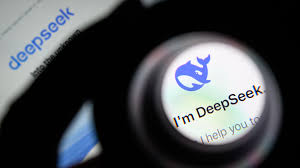🧠 An In‑Depth Analysis of DeepSeek‑R1: Features and Applications in Modern Technology
1. Introduction
Since its debut on January 20, 2025, DeepSeek‑R1 has disrupted the LLM landscape with its blend of advanced reasoning, reinforcement learning, and cost-efficient development—all under open-source licensing. This article dives deep into R1’s technical strengths and explores its transformative use across industries like healthcare, finance, legal, education, and more.
2. Core Features of DeepSeek‑R1
2.1 RL-Driven Reasoning & Chain-of-Thought
DeepSeek‑R1 uses a reinforcement learning (RL) approach rather than relying solely on standard supervised fine-tuning. This enables emergent skills like chain-of-thought logic, self-reflection, and step-by-step reasoning—producing outputs that explicitly demonstrate its thinking process .
2.2 High Reasoning Performance at Low Cost
Benchmarks show DeepSeek‑R1 performs on par with OpenAI o1 across math, coding, and general reasoning tasks—all trained for only ~$6M, compared to GPT‑4’s hundreds of millions . It even outpaces models like Anthropic Claude 3.5 Sonnet in some evaluations .
2.3 Open Source + Distillation
Released under the MIT license, DeepSeek has open-sourced R1, plus six distilled dense variants (1.5B–70B) based on Llama and Qwen. These “lite” models retain reasoning capabilities while reducing compute requirements .
2.4 Agentic & Inference-Driven Architecture
DeepSeek‑R1 embodies the shift from pre-training-centric LLMs toward inference-driven, agentic AI—designed for tool use, function calling, and autonomous task planning .
2.5 Multilingual and Multi-Modal Evaluation
The model supports both English and Chinese, excels at translations, and can handle logical tasks across languages. Some distilled versions show early support for image input .
3. Why DeepSeek‑R1 Is Disruptive
3.1 Cost & Efficiency
By leveraging RL and distilled models, DeepSeek‑R1 achieved top-tier performance for a fraction of traditional costs—a major disruption to the AI “arms race” .
3.2 Democratizing Access
Open-sourcing the model and weights empowers anyone—from startups to researchers—to build high-end reasoning systems without heavy investment .
3.3 Energy and Infrastructure Savings
DeepSeek managed to train R1 on fewer GPUs during chip export restrictions—suggesting a more eco-efficient path compared to models requiring mass compute grids .
4. Transformative Industry Applications
4.1 Healthcare & Clinical Decision Support
A Nature-backed survey highlights DeepSeek‑R1’s competitive edge in medical reasoning—achieving high diagnostic accuracy with structured, explainable chains of thought . A separate evaluation reported 93% accuracy in 100 clinical MedQA cases, though noted overthinking issues with long outputs .
4.2 Financial and Predictive Analysis
Thanks to inference-driven design and real-time decision-making, DeepSeek‑R1 is ideal for financial forecasting, algorithmic trading, and portfolio modeling—fields where rapid response and reasoning are essential .
4.3 Legal & Regulatory Tech
R1’s logical coherence and stepwise problem-solving make it suitable for contract analysis, compliance workflows, and legal risk evaluation—areas requiring rigorous reasoning .
4.4 Education & Research Assistance
DeepSeek‑R1’s interactive chain-of-thought makes it a valuable asset in teaching, tutoring, and social science research, with strong performance across psychometrics, translation, and public policy analysis tasks .
4.5 Software Engineering & Code Generation
The model performs strongly on code-generation benchmarks and is effective in debugging and architectural design assistance—offering enhanced tools for developers .
4.6 Enterprise Generative Workflows
Built for RAG, function calling, and decision orchestration, R1 fits robustly in enterprise-grade AI pipelines characterized by inference-heavy workloads . Enterprise platforms like DataRobot, AWS Bedrock, and Azure Foundry are integrating R1 with governance and monitoring tools .
5. Deployment & Integration Contexts
5.1 Cloud Marketplaces
R1 and its distilled versions are now available on:
AWS Bedrock and SageMaker JumpStart (US East/West) .
Azure AI Foundry & GitHub with evaluation tools
5.2 Infrastructure Flexibility
Supports both GPU-accelerated inference and lighter CPU-based distillations, allowing diverse deployment—from enterprise clusters to local edge setups DataRobot.
6. Limitations & Governance Considerations
Safety risks: hallucinations, overthinking, misinformation—especially in healthcare .
Bias and censorship: censorship on sensitive Chinese political queries and biases in multilingual contexts .
Performance gaps: occasional lags in fluency compared to top-tier models
Mitigation strategies include structured output enforcement, domain-specific validation, human-in-the-loop checks, prompt alignment, and continuous benchmarking—frameworks supported by research and DataRobot’s enterprise integration paths .
7. The Road Ahead: Trends & Opportunities
7.1 Next-gen Agentic AI
DeepSeek‑R1’s path model paves the way for autonomous agents capable of multi-step decision-making, tool orchestration, and function calling—ideal for intelligent digital assistants .
7.2 Expanding Multimodality
Although R1 focuses on text, its agentic inference core can extend to vision, audio, and IoT—enabling AI systems that sense, reason, and act holistically .
7.3 Responsible Scaling
Continued research into bias control, clerk audits, and domain alignment is essential, especially in sensitive domains like healthcare and legal tech .
7.4 Democratized Agentic AI
Making agentic, reasoning-first AI available to independent developers and small teams through low-cost tools and distillation democratizes innovation—further breaking centralized dominance .
8. Conclusion
DeepSeek‑R1 marks a milestone in high-quality, scalable LLM design—combining reasoning-first architecture, rethinking of training economics, and enterprise integration potential. It’s pushing forward sectors like healthcare, finance, law, education, and software, all while promoting innovation through open access.
As AI transitions toward agentic systems, models like DeepSeek‑R1 lay the groundwork for responsible, inference-driven, autonomous intelligence—ready to transform modern technological ecosystems.









